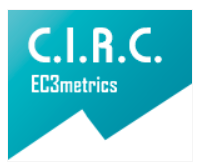Correlation Between Sociodemographic Variables and Language in Children With 3 Years Old
Correlación Entre Variables Sociodemográficas y Lenguaje en Niños de 3 Años
Main Article Content
Objective: To correlate the sociodemographic variables with the expressive and receptive language in children with 3 years of age from the city of Barranquilla.
Introduction: Human language is a social realization that is not alien to the changes that society exerts, therefore, the acquisition is influenced by the sociodemographic variables that stimulate the aspects. The receptive, provides information about the reception of data and knowledge of the lexicon. The expressive one analyzes the use of phonological rules, the ability to produce sounds and the consistency in their production.
Methodology: Two instruments were applied; REEL scale by telephone from 5 to 20 minutes and the survey of sociodemographic variables in self-administered digital format. The sample consisted of 14 3-year-old children in the city of Barranquilla.
Results: In the combined variables, the age of the main caregiver and the number of people with whom he lives were those that interceded negatively in the expressive aspect with a regular classification. The receptive showed good grades.
Conclusion: Sociodemographic variables; The age of the caregiver and the number of people they live with strongly influence the development of expressive language in 3-year-olds.
Downloads
Publication Facts
Reviewer profiles N/A
Author statements
Indexed in
- Academic society
- Bogotá: Corporación Universitaria Iberoamericana
- Publisher
- Bogotá: Corporación Universitaria Iberoamericana
Article Details
Alvarenga, A., Aguiar S., Horta, L. (2016). Language development and its relation to social behavior and family and school environments. A systematic review. CoDAS, 470-479.
Barragán, M., Bolaño, D., Maestre, K., Romero, V. (2006). Características familiares relacionadas con el lenguaje expresivo en niños de cinco años de la institución educativa urbana la unión. Facultad Ciencias Alvarenga De La Salud. Universidad De Sucre, 24 – 34.
Bloom, L., Lahey, M. (1978). Language development and language disorders. New York: Wiley.
Díaz, A., Bacallao, J., Vargas, R., Aguilar, R. (2017) Desarrollo infantil en zonas pobres de Perú. Rev. Panam Salud Pública. Vol. 41:e71
Dickinson, D., Patton, T. (2002). Beginning Literacy with Language: Young Children Learning at Home and School. Baltimore; Paul H. Brookes, eds.
Dora, G; Yinet, G. (2016). La oralidad en el hogar y su influencia en los desempeños comunicativos de un grupo de niños de la sede educativa Kennedy de Pereira. Vol 17. N° 1. Pags. 237 – 238.
Moran, M. D. (2017). Los trastornos del lenguaje y las necesidades educativas especiales. Consideraciones para la atención en la escuela. Universidad y sociedad.
Pablo, M. N. (2003). Adquisición Del Lenguaje. El Principio. Revista de Filología y su Didáctica, (26), 321-347
Sousa, V., Driessnack, M., Costa, I. (2007). Revisión de diseños de investigación resaltantes para enfermería. parte 1: diseños de investigación cuantitativa. Obtenido de Rev Latino-am Enfermagem[a]
Vargas, N., Morales, M.P., Witto, A., Zamorano, J., Olhaberry, M., Farkas,C. (2016). En qué medida la mentalización parental y el nivel socioeconómico predicen el lenguaje infantil Psicoperspectivas, 15(1), 169-180. doi: 10.5027/psicoperspectivas-vol15-issue1-fulltext-690
Vivanco, R. (2016). Rodolfo Lenz, un sociolingüista visionario. Con Extos, N° 36, 111-126. Recuperado de: file:///C:/Users/User/Downloads/Dialnet- RodolfoLenzUnSociolinguistaVisionario-6086952.pdf
Vygotsky, L. S. (1983): Pensamiento y lenguaje. Buenos Aires. La Pléyade.

















